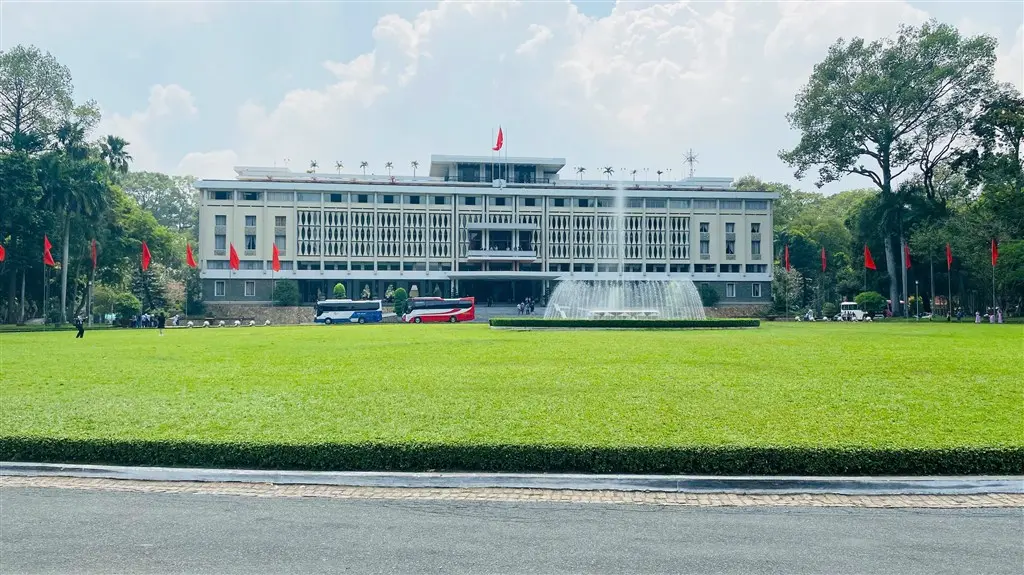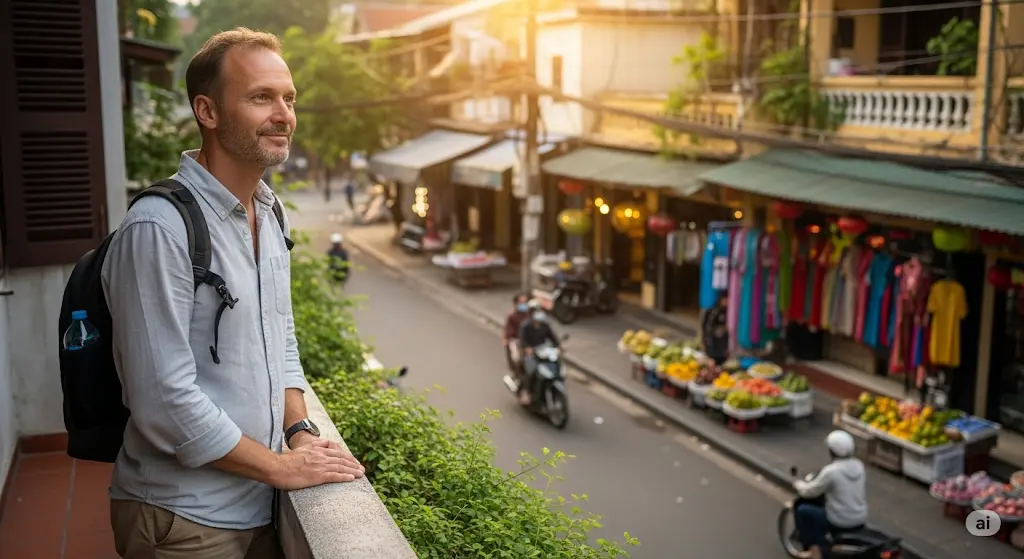Welcome to EssentialVietNamtravel.com, your trusted guide to the vibrant heart of Southeast Asia. Today, we embark on an immersive journey into a fundamental, delightful element of daily life here: the incredible world of the vietnam beverage. These drinks are far more than simple tools for hydration; they are liquid expressions of vietnamese culture, serving as a flavorful reflection of the nation’s rich history, its bountiful agriculture, and the deep social connections that bind its people. Each sip tells a story, a tradition passed down through generations.
The vietnam beverage scene stands distinct and proud within the broader spectrum of asian beverages and is increasingly making its mark, influencing trends on the global beverage market. So, prepare to set aside any preconceived notions you might have about a standard imported drink; to truly experience Vietnam is to explore its unique and diverse liquids.
This exploration ventures beyond the well-trodden path of vietnamese solid food. It is about attuning yourself to the daily rhythm of Vietnamese life, a rhythm often punctuated by the slow drip of strong coffee, the clinking of ice in a refreshing glass of tra, or the collective, joyous cheer that erupts over glasses of bia hoi. The food and drink industry in Vietnam is a dynamic, ever-evolving entity, yet it remains deeply rooted in the principle of utilizing fresh, locally sourced ingredients, prepared with methods that have been honed and perfected over centuries.
Our guiding principle, and one that will become abundantly clear, is that beverages are integral to vietnamese daily life. As you will discover, Vietnam has diverse traditional drinks, each with its own narrative and cultural significance. Join us at EssentialVietNamtravel.com as we delve into this essential, captivating facet of vietnamese cuisine. We aim to provide you with clear, actionable insights, so much so that after reading, you’ll feel confident enough to navigate and enjoy 90% of Vietnam’s beverage offerings on your own.
What Makes Vietnamese Beverages So Special? An Introduction to Popular Drinks like Ca Phe Sua Đa and Tra
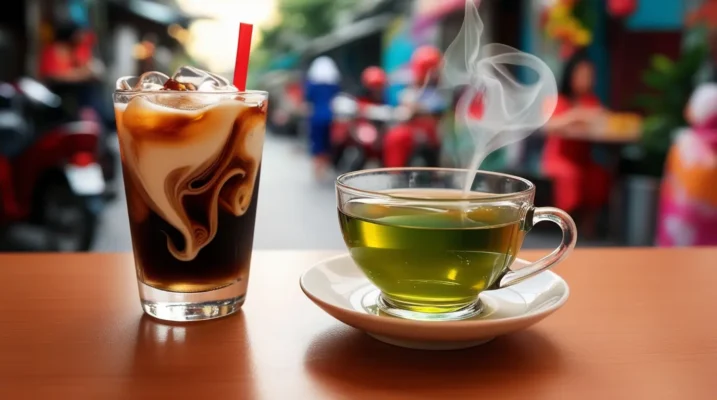
So, what are popular vietnamese drinks, and what truly sets them apart from others around the world? The secret, if there is one, begins with an unwavering commitment to fresh ingredients. Imagine the taste of sun-ripened tropical fruits, plucked at their peak; the subtle aroma of freshly gathered herbs; and the robust character of locally cultivated coffee bean and tea leaf varieties.
These are not mere components; they are the soul of the drink. Furthermore, the preparation method for many Vietnamese beverages involves unique, often ingenious techniques that result in distinct flavor profiles you simply won’t encounter elsewhere. A notable characteristic of many iconic drinks is a delightful sweet taste, frequently achieved through the judicious use of sugar or condensed milk. This sweetness often serves as a perfect counterpoint to the tropical heat, offering both refreshment and a burst of energy.
While the beverage landscape is vast, two titans undeniably dominate the scene: Ca phe sua da (the iconic iced coffee with condensed milk) and Tra (tea in its myriad forms). These are not just beverages to be consumed; they are cultural rituals, deeply embedded in the daily fabric of life. You will observe people from all walks of life enjoying them at all hours of the day, often congregated on the ubiquitous red plastic stools that are a hallmark of bustling street vendor stalls or tucked away in the quieter, more contemplative corners of a local market.
While the vibrant vietnamese street food scene deservedly garners significant international attention, the drinks served alongside these culinary delights are equally important and thoughtfully crafted. They are intrinsically designed to complement both the climate and the cuisine. Consequently, many are served iced, providing a welcome respite from the pervasive humidity and an effective means to quench thirst. Unlike plain, unflavored water, these Vietnamese concoctions offer a complex tapestry of tastes and, in many cases, are also valued for their perceived health benefits, often incorporating local plants and herbs as a key food ingredient.
The cultural and social aspects of these beverages cannot be overstated. In Vietnam, sharing a drink is a fundamental mode of human connection, a way to forge bonds, conduct business, or simply pass the time in pleasant company. The act of offering a drink is a gesture of hospitality, a welcome into one’s space or social circle. This practice highlights how tradition guides consumption and reinforces the idea that ingredient causes beverage – the local bounty directly shapes what is consumed.
Other popular drinks you’ll encounter include the incredibly refreshing nuoc mia (sugarcane juice), vibrant sinh to (fruit smoothies), and of course, bia hoi (fresh beer). Each of these, in its own way, contributes to the rich mosaic that is the vietnam beverage culture, demonstrating that Vietnam has diverse traditional drinks.
The Soul of Vietnam: Deep Dive into the World of Vietnamese Coffee (Ca Phe)
In Vietnam, Coffee (or ca phe as it’s locally known) transcends its role as a mere beverage; it is an integral part of the national identity, a significant economic powerhouse, and the very bedrock of the modern coffee culture in vietnam. Though introduced by the French in the 19th century, coffee cultivation quickly took root and flourished, particularly with the resilient robusta bean.
This variety, known for its strong, bold, and often slightly bitter flavor, thrives in the Vietnamese climate and soil, contributing to Vietnam’s current status as a global coffee-producing giant. However, it’s not just the quantity of coffee produced but the unique preparation methods that have truly captivated the world. The most iconic of these involves the phin filter, a small, unassuming metal drip filter that is placed directly over a cup, allowing for a slow, contemplative brewing process.
The phin-brewed coffee is a testament to the Vietnamese appreciation for a strong, concentrated brew. The beans, often roasted dark, sometimes with butter or even cocoa, yield an intense elixir.
How to Make Authentic Vietnamese Phin Coffee (Basic Ca Phe Den – Black Coffee): A Step-by-Step Guide
For those keen to replicate this experience, here’s a more detailed guide. EssentialVietNamtravel.com believes that with these steps, anyone can achieve a near-perfect cup.
- Gather Your Tools and Ingredients:
- A Vietnamese phin filter: These typically consist of four parts: the filter chamber (where the coffee and water go), a screw-down or gravity press (to compact the grounds), a perforated plate (that sits on the cup), and a lid (to retain heat). They come in various sizes; a single-serving size is most common.
- Vietnamese coffee bean grounds: Ideally, use a medium-coarse grind specifically for phin. True Vietnamese coffee often uses 100% robusta or a blend heavily favoring robusta. Brands like Trung Nguyen (especially their Sang Tao line) are widely available and offer an authentic taste. If you’re looking for the best vietnamese coffee beans to buy locally, ask for “ca phe rang xay” (roasted and ground coffee) and specify for phin.
- Hot water: Water should be just off the boil, around 90-96°C (195-205°F).
- A heatproof glass or cup: Traditionally, a small, clear glass is used to see the coffee drip.
- Prepare the Phin and Cup:
- Warm your cup and the phin by rinsing them with hot water. This helps maintain a stable brewing temperature. Discard the water.
- Place the perforated plate on top of your chosen cup. Then, position the filter chamber squarely on top of this plate.
- Add Coffee Grounds:
- Add about 2-3 heaped teaspoons (or one to two tablespoons, depending on phin size and desired strength) of coffee grounds into the filter chamber.
- Gently shake the chamber side-to-side to level the grounds. Crucial Tip: Avoid compacting the grounds too firmly at this stage. A level bed is important for even extraction.
- Place the Press:
- Gently place the screw-down press (or gravity press) on top of the leveled grounds. If it’s a screw-down type, give it a very gentle turn just to settle it – do not screw it down tightly yet. The goal is for it to rest evenly on the coffee.
- Bloom the Coffee (The “No” Stage):
- Pour approximately 20-25ml (about two tablespoons) of hot water into the chamber, ensuring all grounds are wetted.
- Wait for about 30-60 seconds. You will see the coffee grounds swell or “bloom.” This vital step allows CO2 and other gases trapped in the freshly roasted coffee to escape, which significantly improves the flavor of the final brew.
- Adjust the Press (If Applicable):
- For screw-down presses: After blooming, some brewers give the press a gentle quarter to half turn to compact the grounds slightly. This can help regulate the drip rate. Too tight, and it will choke; too loose, and it will drip too fast. Experience will guide you. For gravity presses, no adjustment is needed.
- The Main Pour and Brewing:
- Slowly and steadily fill the filter chamber with hot water, nearly to the top. Pour gently to avoid disturbing the coffee bed too much.
- Place the lid on the phin to retain heat during the brewing process.
- Now, patience is key. The coffee should begin to drip slowly and steadily into the cup. The ideal drip rate is about 1-2 drips per second. The entire process for a single serving should take between 4 to 7 minutes. This slow preparation method is characteristic of phin-brewed coffee. The origin of the beans from regions like the Central Highlands, combined with this slow drip, defines the intense taste.
- Monitor and Adjust (Troubleshooting):
- If it drips too fast: The grind might be too coarse, or the press isn’t snug enough. The coffee will be weak.
- If it chokes (drips very slowly or not at all): The grind might be too fine, you’ve used too much coffee, or the press is too tight.
- Making adjustments mid-brew is tricky, so aim to get it right from the start. It takes a few tries to perfect your technique.
- Enjoy Your Ca Phe Den:
- Once the dripping stops (or when the desired amount of coffee has been brewed), carefully remove the phin. You now have a small serving of incredibly strong, aromatic black Vietnamese coffee. It can be enjoyed as is, or with a little sugar.
The most internationally beloved variation, of course, is Ca phe sua da. To prepare this, before you even begin the brewing process, add two to three tablespoons (or to your taste) of condensed milk to the bottom of your glass. Then, place the phin on top and brew the coffee as described. The hot coffee drips directly onto the thick, sweet milk. After the brewing is complete, stir the coffee and condensed milk together vigorously until they are fully combined. Finally, pour this potent mixture over a tall glass filled with ice. The result is a drink that is simultaneously intensely strong and sweet, a truly defining Vietnamese taste experience.
Another famous, almost dessert-like variation, particularly celebrated in Hanoi, is ca phe trung (egg coffee). If you’re curious about how to make vietnamese egg coffee, it involves a meticulous process of whisking egg yolks with sugar, condensed milk, and sometimes a touch of butter or cheese, until it forms a light, airy, meringue-like foam. This rich, creamy foam is then floated on top of a shot of strong black coffee. It’s a decadent treat.
For a tropical twist, ca phe cot dua (coconut coffee) blends strong coffee with sweet, creamy coconut milk or coconut ice cream, creating a refreshing and indulgent drink. Exploring the diverse offerings at different cafes, from established chains like Highlands Coffee or Trung Nguyen (who often highlight the historical significance of coffee is a major cultural product) to the countless tiny, family-run local spots, reveals the incredible depth and adaptability of this beverage. The fundamental ingredient causes beverage dynamic is always at play: the quality of the robusta bean and the method of preparation directly influence the final cup.
Beyond the Bean: Exploring Traditional Trà and Herbal Elixirs
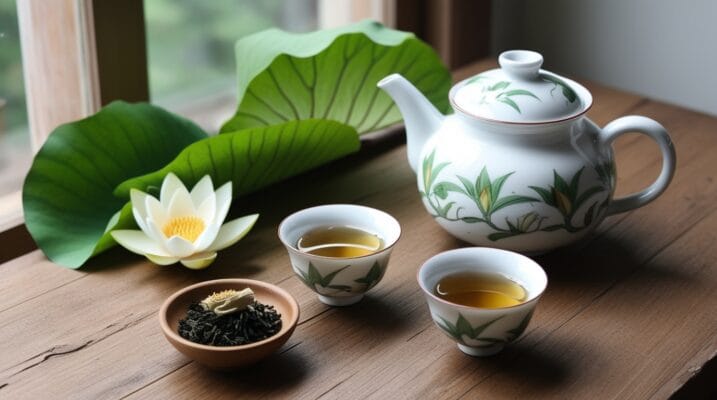
While the bold character of Vietnamese coffee often takes center stage in international discussions, Tea (Tra) holds an equally, if not more historically profound, place in the heart of Vietnamese life. It embodies a quieter, more contemplative, and deeply ingrained aspect of the vietnam beverage scene. The strong tea culture in Vietnam stretches back for centuries, long predating the arrival of coffee.
Simple green tea (trà xanh) is the undisputed everyday staple, a ubiquitous presence enjoyed throughout the day, from early morning awakenings to late-night conversations. It is frequently offered as a gesture of welcome and hospitality in homes, businesses, and even at formal gatherings. Its characteristically slightly bitter, yet deeply refreshing flavor cleanses the palate and invigorates the senses.
Vietnam is blessed with diverse tea-growing regions, each contributing unique nuances to the final cup. Areas like Thai Nguyen in the north are renowned for producing high-quality green tea, while higher altitude regions such as Da Lat in the Central Highlands are known for cultivating varieties like Oolong and black tea. The specific origin of the tea leaves significantly influences their aromatic profile and taste. Beyond the everyday green tea, Vietnam boasts a range of exquisite artisanal and ceremonial tea preparations that showcase a deep respect for the tea leaf.
Lotus tea (tra sen) is perhaps the most famous and revered of these ceremonial teas. The traditional, painstaking preparation method for the finest lotus tea involves a vintage technique where high-quality green tea leaf buds are carefully placed inside fresh lotus flower blossoms. The flowers are then closed, and the tea is left to absorb the delicate, ethereal fragrance of the lotus overnight. This process might be repeated several times to achieve the desired level of aroma. This meticulous method underscores the profound connection between nature and consumption, elevating the tea-drinking experience to an art form.
The expansive world of Tra in Vietnam also extends deeply into the realm of traditional vietnamese medicine, where a wide variety of herbal infusions are commonly consumed not just for refreshment but for their perceived health benefits. These traditional vietnamese herbal drinks recipes utilize an array of local plants, roots, and flowers, each believed to possess specific therapeutic properties.
A popular and well-known example is Artichoke Tea (Tra Atiso), which is particularly associated with the cooler climate of Da Lat. It is recognized for its subtly sweet, earthy flavor and is widely believed to have detoxifying properties, often enjoyed to support liver health. Many visitors wonder where to buy artichoke tea vietnam; local markets, specialty tea shops, and even supermarkets in Da Lat and other major cities are excellent sources.
Other common fresh herbal infusions you might encounter include drinks made from chrysanthemum (tra hoa cuc) for its cooling effects, ginger tea (tra gung) to aid digestion and warm the body, and pennywort juice/tea (nuoc rau ma or tra ra ma), a vibrant green drink believed to have cooling and healing properties. The preparation method for these herbal drinks usually involves simmering the dried or fresh herbs in water, and the resulting infusion can be enjoyed hot or iced, depending on personal preference and the prevailing temperature or weather.
This focus on regional-exclusive flora means that as you travel through Vietnam, you’ll continually discover unique medicinal and flavorful drinks. Learning how to make authentic vietnamese iced tea (tra da) is also a simple pleasure. This usually involves brewing a strong batch of black tea (or sometimes green tea), sweetening it generously with sugar, and then pouring it over a tall glass packed with ice, often with a wedge of lime or a few sprigs of mint for added freshness.
In the world of Vietnamese tea, tradition guides consumption, and the strong preference for fresh ingredients are preferred ensures that vietnam has diverse traditional drinks is a vibrant reality, particularly evident in the realm of tea and herbal concoctions. The agricultural connection is undeniable, as the specific region influences specialty teas and herbal remedies available.
Refreshingly Vietnamese: The Joy of Nuoc mia, Sinh To, and Other Fresh Fruit Drinks
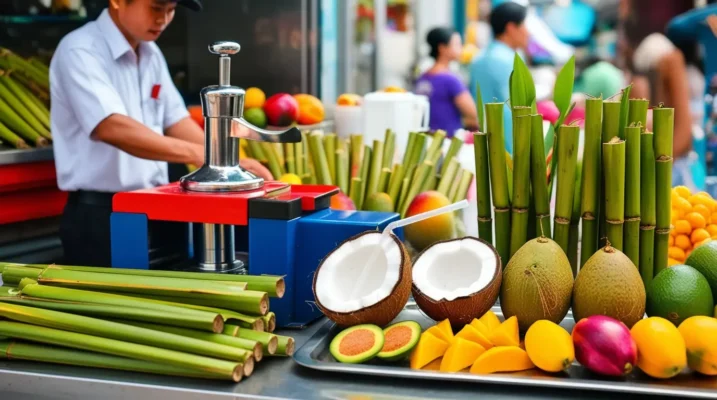
When the pervasive tropical heat of Vietnam becomes particularly intense, locals and visitors alike instinctively reach for a category of beverages that offer instant, unparalleled refreshment: drinks made from the country’s astonishingly abundant and diverse range of fruits and plants. These unique non-alcoholic vietnamese beverages are a vibrant testament to the rich bounty yielded by tropical fruit agriculture, especially in fertile regions like the sprawling Mekong Delta, often referred to as Vietnam’s fruit basket.
Sugarcane Juice, locally known as Nuoc mia, stands as perhaps the quintessential street-side cooler, a ubiquitous sight and taste across the nation. You will invariably see vendors skillfully feeding long, pale green stalks of sugar cane into often quite noisy mechanical presses, ensuring it’s freshly pressed. The resulting liquid, a cloudy, pale green elixir, is incredibly fresh and possesses a natural, unadulterated sweetness that is both invigorating and satisfying.
Nuoc mia is typically served in a plastic bag or cup filled to the brim with ice and is often enhanced with a squeeze of kumquat or calamansi to perfectly balance the sweetness. Finding it is remarkably easy; just keep an eye out for the distinctive carts piled high with fresh sugarcane stalks, a common fixture on almost every street corner, especially if you’re actively wondering where to find sugarcane juice in hanoi, Ho Chi Minh City, or any other Vietnamese town.
Ready to Explore Vietnam’s Flavors?
Planning a trip to taste these amazing Vietnamese beverages firsthand? Find the best flight deals to get you there!
Fruit Smoothies, widely known and loved under the name Sinh to, represent another beloved category of refreshing drinks. These are not your average, run-of-the-mill smoothies. Vietnamese sinh to are characterized by their use of an incredibly wide array of exotic tropical fruits as the base ingredient. Imagine blends featuring luscious mango, creamy avocado (a surprisingly popular and delicious smoothie base!), vibrant dragon fruit, uniquely flavored jackfruit, or tangy soursop.
These fruits are typically blended with crushed ice, a generous dollop of sweetened condensed milk (Sua), and sometimes a scoop of yogurt to add extra creaminess and a slight tang. The final product is a wonderfully thick and creamy, intensely fruity concoction that often feels like both a drink and a light dessert. Exploring the myriad different sinh to combinations available from street vendors and small cafes is a delicious and rewarding adventure in itself.
And one must absolutely not forget the simple perfection of Coconut Water (Nuoc dua). It’s crucial to distinguish the Vietnamese experience from the often-disappointing packaged versions found elsewhere. In Vietnam, coconut water is frequently served directly from a fresh young coconut, which is expertly hacked open right before your eyes by a vendor wielding a machete.
The taste is incomparably naturally sweet and refreshing, packed with natural electrolytes, making it the perfect natural hydrator on a hot day. You might also find a delightful array of other fresh fruit juices (Nuoc ep), such as orange (nước cam), pineapple (nước thơm or nước dứa), or passionfruit (nước chanh dây), all typically squeezed or blended to order. Many Vietnamese hold a strong belief in the various vietnamese fruit juice benefits, viewing them not just as tasty refreshments but also as contributors to good health. For all these drinks, the ingredients are paramount – absolute freshness dictates the quality and intensity of the flavor. The preferred serving temperature is almost invariably ice-cold, ensuring maximum refreshment.
Bia Hơi Culture: Understanding Vietnam’s Unique Fresh Beer Experience
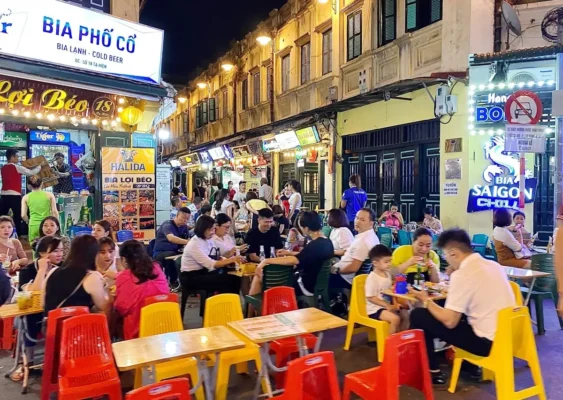
No comprehensive discussion about the landscape of vietnam beverage would be complete or accurate without dedicating significant attention to Bia Hoi. This is not merely beer in the conventional sense; it is a deeply ingrained cultural phenomenon, intricately woven into the social fabric of Vietnamese society, particularly prominent in the northern regions of the country, though its presence is felt nationwide.
Bia Hơi specifically refers to fresh, locally brewed draft beer, which is typically delivered daily in distinctive metal kegs to countless street-side establishments and simple, open-air quán (eateries). Its most defining characteristic, and what sets it apart from most other beers, is that it is unpasteurized. This means it has a very short shelf life and is intended to be consumed on the very day it is brewed and delivered, ensuring maximum freshness.
The overall experience of drinking Bia Hơi is just as important, if not more so, than the drink itself. Picture this common scene: low plastic tables and the ever-present, iconic red plastic stools spilling out from a simple shopfront onto the bustling sidewalk. The air is thick with lively chatter, laughter, and the clinking of glasses as they are constantly refilled with the light, crisp, pale lager.
The typical price for a glass of Bia Hơi is incredibly low, often just a few thousand Vietnamese Dong, making it an exceptionally accessible social lubricant for people from all walks of life. It serves as the quintessential after-work gathering spot, a place for friends to unwind in the evening, or a casual venue for impromptu celebrations. Bia Hơi is almost always paired with an array of inexpensive but flavorful street food snacks – common accompaniments include boiled or roasted peanuts, nem chua (fermented pork sausage), various grilled meats or seafood, or simple fried tofu.
While larger, more established breweries like Saigon Beer or Hanoi Beer produce a wide range of bottled and canned Bia that are popular throughout the country and internationally, the Bia Hơi experience remains distinctively local, ephemeral, and deeply authentic. Its economic impact is also significant, providing a livelihood for numerous small vendors and brewers. Furthermore, its widespread availability highlights the prevalent street vending culture that is such an integral part of Vietnamese urban life.
The choice of drink in Vietnam is often influenced by circumstance and context; certainly, weather affects choice, and on a hot, humid evening, the cool, easy-drinking refreshment offered by Bia Hơi is hard to beat. It stands as a cornerstone of southeast asian drinks culture, offering an unfiltered, unpretentious, and thoroughly enjoyable taste of local life and camaraderie. It’s a place where street vendors are primary access points to a truly local social experience.
Further Reading: Dive Deeper into Vietnamese Culture
Where to Sip: Finding Authentic Vietnamese Beverages from Street Vendors to Local Cafes
Now that your curiosity is piqued and your taste buds are perhaps tingling with anticipation, the practical question arises: where exactly do you go to find and enjoy these authentic Vietnamese drinks? The wonderfully convenient answer is: practically everywhere! Street vendors are, without a doubt, arguably the most crucial and widespread access points for a vast majority of the iconic beverages we’ve discussed.
Be constantly on the lookout for the distinctive Nước Mía carts with their noisy presses and piles of sugarcane; the mobile coffee setups, often remarkably compact, complete with their tiny stools inviting passersby for a quick brew; the ladies presiding over large pots of fragrant herbal teas, ladling them out into cups or bags; and, of course, the bustling, lively Bia Hơi corners that come alive in the late afternoon and evening. These vendors are the vibrant heart and soul of the vietnamese street food and drink scene, consistently offering fresh, incredibly affordable, and undeniably authentic taste experiences.
Visiting a local market (chợ) is another excellent avenue for discovering a wide array of drinks. Markets are treasure troves where you can find vendors selling freshly squeezed juices (Nuoc ep), colorful fruit smoothies (Sinh to), and sometimes even stalls specializing in local teas or freshly roasted coffee beans that you can purchase to take home. This is where fresh ingredients are preferred is most evident.
Of course, dedicated cafes (quán cà phê) abound throughout Vietnam, catering to every taste and preference. You will find everything from very traditional, old-school coffee shops that focus almost exclusively on the art of the phin filter method, to sleek, modern coffee chains like Highlands Coffee and Trung Nguyen. These larger chains often offer a broader range of coffee styles, including espresso-based drinks, alongside Vietnamese classics, usually in air-conditioned, comfortable settings. Smaller, independent cafes frequently exude a unique charm and character. They might specialize in particular niche drinks, such as the decadent egg coffee in Hanoi, or offer a curated selection of artisanal teas.
Most restaurants, from simple eateries to more upscale establishments, will invariably offer a selection of basic beverages to accompany your meal. This typically includes various types of Tra (often complimentary green tea), soft drinks, local and sometimes imported Bia, and frequently fresh juices or smoothies (Sinh to). Don’t hesitate to explore beyond the main tourist thoroughfares.
Venturing into local neighborhoods, away from the well-trodden paths, often yields the most authentic, memorable, and rewarding beverage experiences. Whether your quest is for the most potent Ca phe sua da, the most fragrant Tra Atiso, the absolute freshest Nuoc mia, or the liveliest and most convivial Bia Hoi joint, the true joy lies in the exploration itself. The fundamental assumptions and premises we started with hold steadfastly true: these beverages are everywhere, seamlessly integrated into the tapestry of daily life, reflecting their deep cultural importance.
From the uniquely robust kick of phin-brewed coffee masterfully sweetened with rich condensed milk, to the delicate, almost ethereal fragrance of lotus flower-infused tea; from the raw, unadulterated refreshment of freshly pressed sugarcane juice (Nuoc mia) to the boisterous, communal spirit found in a glass of Bia Hơi enjoyed on a red plastic stool – the world of the vietnam beverage is exceptionally rich, wonderfully diverse, and profoundly intertwined with the nation’s identity and vietnamese culture.
At EssentialVietNamtravel.com, we wholeheartedly encourage you to step out, be adventurous, explore with an open mind, and sip your way through this incredible, flavorful landscape. Understanding these drinks, their origin, their ingredients, their preparation method, and the cultural, social, and historical aspects surrounding them, is to understand a vital, living part of Vietnam itself. Remember, ingredient causes beverage, region influences specialty, preparation defines taste, and ultimately, tradition guides consumption. Enjoy your journey!
Your Vietnamese Drink Adventure Awaits!
Don’t just dream about Vietnam’s incredible beverages – make it a reality! Compare flight prices now and find the perfect deal for your unforgettable journey.
Find Flight Deals on Kiwi.com
Explore Flights with WayAway (Cashback Offers!

